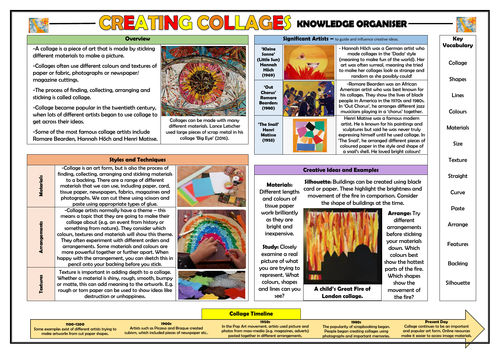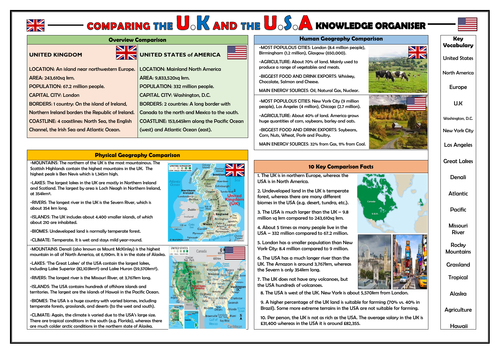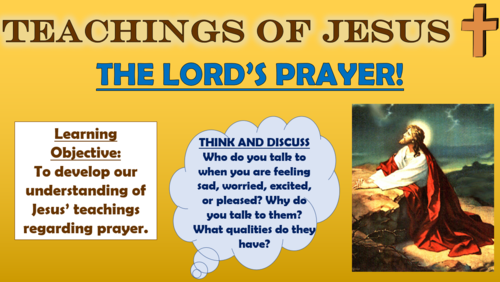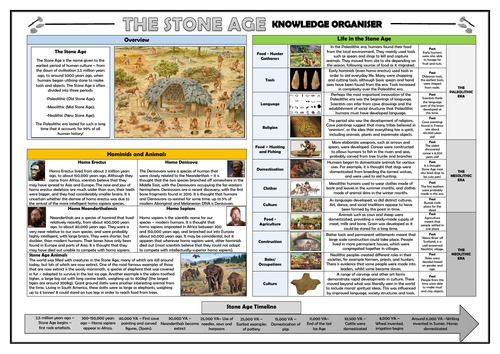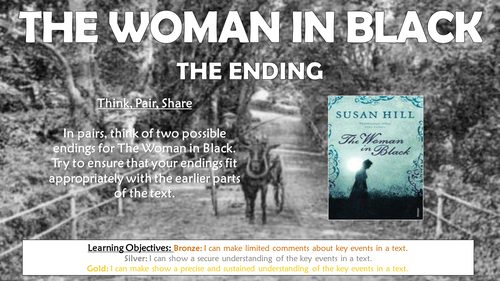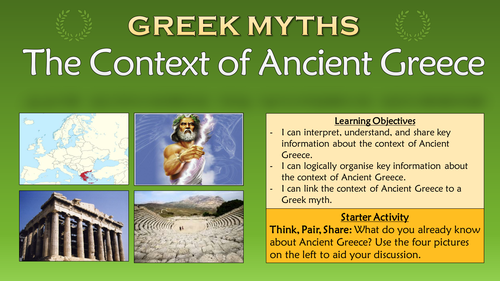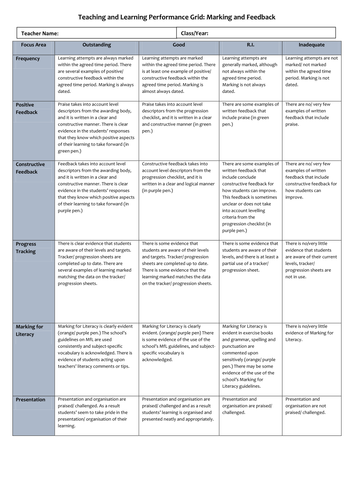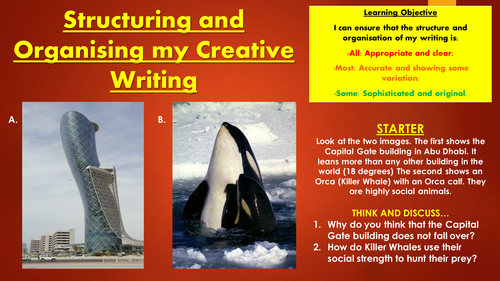
3k+Uploads
1856k+Views
2204k+Downloads
All resources

RE - Special Ways of Living - Buddhist Monks and Nuns!
In this engaging lesson, students are introduced to how Buddhist monks and nuns live their lives. They consider the sacrifices that these people make and the reasons behind their choices.
The learning is guided by a clear and colourful PowerPoint presentation, which guides students through the following step-by-step journey:
-Recalling their prior learning about how Christians and Buddhists live;
-Reflecting upon an image of monks and considering what they can infer about them/ their lives;
-Learn key facts about monks and nuns, through key facts on the slideshow and engagement with a hyperlinked video that leads them through a day in the life of a Buddhist monk;
-Considering the qualities and skills that Buddhist monks and nuns need to show, and considering how they would feel/think if they were in a similar position;
-Self-reflecting on the extent to which they feel they have met the learning objectives.
This resource pack includes the comprehensive PowerPoint presentation (15 slides) and the hyperlink for the video. There is everything that you need here to teach the lesson.
In the past, I have used this lesson with children from across Key Stage 1 - the key learning is aligned with curriculum expectations for RE, and also the content prescribed by most diocese regions. All images are licensed for commercial use.

Judaism - Moses and the Burning Bush - Lesson!
In this engaging lesson, students are introduced to the story of Moses and the Burning Bush. They are encouraged to think deeply about the meanings that can be taken from the story, and consider the main ‘turning points’ in their own lives and the lives of others.
The learning is guided by a clear and colourful PowerPoint presentation, which guides students through the following step-by-step journey:
-Knowledge recall - gauging children’s prior knowledge of Judaism - including Jewish persecution in Egypt and Moses’ early life;
-Reading the story of Moses and the Burning Bush - pausing for reflective thought by engaging with the embedded questions;
-Considering the deeper meanings and morals of the story - including Moses’ killing of the Egyptian and his worries about leading the Israelites;
-Considering their own attitudes towards the events and characters in the story;
-Comparing Moses’ turning point with turning points from other religions;
-Thinking of how turning points in their own lives have affected them;
-Completing a plenary to assess their understanding.
This resource pack contains a comprehensive 15-slide Powerpoint and the story/ consideration questions (in both Word and PDF).
In the past, I have used this lesson with children from across Key Stage 2 - the key learning is aligned with curriculum expectations for RE, and also the content prescribed by most diocese regions. All images are licensed for commercial use.

Creating Collages - KS1 Art Knowledge Organiser!
This clear, detailed and visually-appealing resource offers a complete reference point for students learning about creating collages as a part of their art and design study.
It contains comprehensive sections on:
-Overview;
-Styles and Techniques;
-Significant Places/ Artists (e.g. Hannah Höch, Romare Bearden, Matisse);
-Creative Ideas and Examples;
-Key Vocabulary;
-Timeline of Collage.
This resource can be adapted for all ages, but was originally designed for KS1/ lower KS2 children.
The resource is designed to be printed onto A3, and is provided as both a PDF and a Word version (so that you can edit if you want to). All images used are licensed for commercial use and are cited on a separate document (included).

Why the Whales Came - KS2 Reading Comprehension Lesson!
This whole class reading session aims to develop children’s fluency and comprehension skills through reading the opening to Michael Morpurgo’s ‘Why the Whales Came.’
The reading is followed by a series of activities aiming to develop children’s retrieval, explanation, inference, prediction and summarising skills. It also contains a vocabulary check immediately after the extract is read to clarify any unfamiliar/ difficult language.
The tasks are comprised of quick-check questions, solo thinking, pair/ group discussions and deeper thinking activities. The extract needed is provided as a PDF.
The session is best suited for children in years 4-6, although with minor adaptations it could feasibly be used with slightly younger and older year groups.

Anglo-Saxons Religion and Beliefs - Double Lesson!
In this engaging lesson, children develop an understanding of the religions and beliefs that were predominant throughout the time of the Anglo-Saxons. In particular, they learn about Pagan Gods and Goddesses, beliefs with regards to ceremony and the afterlife, and the Christian conversion catalysed by St. Augustine. The learning is guided by a clear and colourful PowerPoint presentation, which guides students through the following step-by-step journey:
-Knowledge recall - gauging what children already know about the Anglo-Saxon era (answers are provided);
-Understanding the key ideas of Paganism and how this replaced Christianity as the dominant belief system after the Anglo-Saxons settled;
-Learning about some of the Anglo-Saxon gods and goddesses (through a short video, which is hyperlinked into the presentation) and using a template to research their chosen God/ Goddess in more depth;
-Discovering Pagan beliefs about death, ceremony and the afterlife (again, through a short video about Sutton Hoo) and demonstrating their understanding through comprehension questions;
-Learning about St. Augustine and how he began the conversion of the Anglo-Saxons to Christianity;
-Producing a persuasive piece of writing, imagining that they are St. Augustine and they are convincing Ethelbert to become Christian.
-Self-reflecting on the extent to which they feel they have met the learning objective.
Included is the comprehensive PowerPoint presentation (21 slides) and the research template for the Pagan Gods and Goddesses activity.
In the past, I have used this lesson with children in upper KS2 (years 5 and 6) - the key learning is aligned with curriculum expectations for history. All images are licensed for commercial use.

Comparison of the UK and USA - Geography Knowledge Organiser!
This clear, detailed and visually-appealing resource offers a complete reference point for students revising knowledge relating to the UK and the United States, as a part of their study of their KS2 place, human and physical geography. It contains comprehensive sections on:
Key Facts Overview and Maps;
Physical Geography Comparison;
Human Geography Comparison;
10 Key Comparison Facts;
Key Vocabulary.
The organiser is designed to help children to learn the relevant place, human and physical geography knowledge from the KS2 Geography National Curriculum:
-understand geographical similarities and differences through the study of human and physical geography of a region of the United Kingdom and a region in North America.
-physical geography, including: climate zones, rivers, mountains, volcanoes and earthquakes
-human geography, including: types of settlement and land use, economic activity including trade links, and the distribution of natural resources including energy.
The resource is designed to be printed onto A3, and is provided as both a PDF and a Word version (so that you can edit if you want to). All images used are licensed for commercial use and are cited on a separate document (included).

World Population Growth - Kids News Article - Reading Comprehension Lesson!
This whole class reading session aims to develop children’s fluency and comprehension skills, through reading an informative and age-appropriate non-fiction text. The text is a news article about the world population surpassing 8 billion people in late 2022. It examines population growth in the past and discusses predictions for the world population later in the 21st Century.
The reading is followed by a series of activities aiming to develop children’s retrieval, explanation, inference, prediction and summarising skills. It also contains a vocabulary check immediately after the extract is read to clarify any unfamiliar/ difficult language.
The tasks are comprised of quick-check questions, solo thinking, pair/ group discussions and deeper thinking activities. The age-appropriate reading text is produced by News for Kids - it has been downloaded and reformatted as a PDF and Word document, and the link for the source is also provided on the first slide of the PowerPoint presentation.
The session is best suited for children in KS2 (particularly years 5-6), although with minor adaptations it could feasibly be used with slightly younger and older year groups.

Year 6 Online Safety Knowledge Organiser!
This clear, detailed and visually-appealing resource offers a complete reference point for children in year 6 (and their teachers and parents) to support their learning about online safety.
The organiser aligns with each of the ‘Education for a Connected World’ strands:
-Self-Image and Identity;
-Online Relationships;
-Online Reputation;
-Online Bullying;
-Managing Online Information;
-Health, Wellbeing and Lifestyle;
-Privacy and Security;
-Copyright and Ownership.
A section at the bottom of the page lists the key vocabulary relating to online safety that children should be able to define and exemplify at this stage.
The resource is bright and engaging, utilising images, acronyms and diagrams to support understanding of key concepts.
The resource is designed to be printed onto either A4 or A3, and is provided as both a PDF (to protect formatting) and a Word version (so that you can edit if you want to). All images used are licensed for commercial use.

KS2 World War II Knowledge Organiser!
This clear, detailed and visually-appealing resource offers a complete reference point for KS2 students learning or revising knowledge relating to the World War II. It contains comprehensive sections on:
Major Events - dates, descriptions, images, and key facts;
Key People;
Participating Countries;
Timeline of Major Events;
The resource is designed to be printed onto A3, and is provided as both a PDF and a Word version (so that you can edit if you want to). All images used are licensed for commercial use and are cited on a separate document (included).

Teachings of Jesus - The Lord's Prayer!
In this engaging lesson, students develop their understanding of Christian prayer. The lesson places a particular emphasis upon the Lord’s Prayer.
The learning is guided by a clear and colourful PowerPoint presentation, which guides students through the following step-by-step journey:
-Considering who we confide in when we need to talk to someone, and understanding that Christians can confide in God;
-Knowledge recall - remembering key facts about Jesus’ life and teaching;
-Watching an engaging, age-appropriate video about how Christians pray and demonstrating understanding through answering questions;
-Using the worksheet provided to read and comprehend the Lord’s prayer, answering the key questions provided;
-Self-reflecting on how the teachings may influence their own lives;
-Considering the extent to which they feel they have met the learning objective.
The resource pack includes everything you need to teach the lesson, including the comprehensive PowerPoint presentation and the ‘Lord’s Prayer’ worksheet (provided in both Word and as a PDF). Just download and teach!
In the past, I have used this lesson with children from across Key Stage 2 with minor adaptations for age - the key learning is aligned with curriculum expectations for RE, and also the content prescribed by most diocese regions. All images are licensed for commercial use.

The Stone Age Knowledge Organiser/ Revision Mat!
This clear, detailed and visually-appealing resource offers a complete reference point for students learning or revising knowledge relating to The Stone Age. It contains comprehensive sections on:
Stone Age Overview (with diagram);
Stone Age Hominids and Animals;
The Paleolithic Era;
The Mesolithic Era;
The Neolithic Era;
Stone Age Timeline.
The resource is designed to be printed onto A3, and is provided as both a PDF and a Word version (so that you can edit if you want to). All images used are licensed for commercial use and are cited on a separate document (included). The resource is most suitable for children in KS2 or KS3.

Queen Victoria Knowledge Organiser!
This clear, detailed and visually-appealing resource offers a complete reference point for children learning about Queen Victoria as a part of their history study of ‘Significant Individuals.’ It contains comprehensive sections entitled:
Overview;
Times in Her Life;
Important Vocabulary;
Queen Victoria Timeline;
Answers to the Important Questions;
Top Ten Facts.
The resource is designed to be printed onto A3, and is provided as both a PDF and a Word version (so that you can edit if you want to). All images used are licensed for commercial use.

Christopher Columbus Knowledge Organiser!
This clear, detailed and visually-appealing resource offers a complete reference point for children learning about Christopher Columbus as a part of their history study of ‘Significant Individuals.’ It contains comprehensive sections entitled:
Overview;
Times in His Life;
Important Vocabulary;
Christopher Columbus Timeline;
Answers to the Important Questions;
Top Ten Facts.
The resource is designed to be printed onto A3, and is provided as both a PDF and a Word version (so that you can edit if you want to). All images used are licensed for commercial use.

Billionaire Boy - KS2 Comprehension Activities Booklet!
This resource booklet contains a wide range of age-appropriate, engaging, and meaningful comprehension activities for use throughout the reading of David Walliams' 'Billionaire Boy.' Teachers have found them particularly useful in comprehension or guided reading sessions. They are perfect for aiding the progress of children towards meeting the upper KS2 expectations within the new National Curriculum framework. Children love learning from these resources, whilst they are also of great use to teachers, as there is explicit information within each task regarding which comprehension strands the task is designed to demonstrate. They also relate to key extracts, characters, and themes from the story, ensuring that children gain a deep understanding of the text.
Activities within the booklet include:
- 'An Interview with Joe Spud' - to enable students to demonstrate that they can: 'Understand what is read by drawing on information from more than one paragraph, identifying key details that support the main ideas, and using quotations for illustration;'
- 'Walliams' Description' - to enable students to demonstrate that they can: 'Explain meanings of words that they know and ask the meaning of new words. Link the meaning of new words to words that they already know;'
- 'The Grubbs!' - to enable students to demonstrate that they can: 'Understand what is read by drawing on information from more than one paragraph, identifying key details that support the main ideas, and using quotations for illustration;'
- 'Figurative Language in Billionaire Boy' - to enable students to demonstrate that they can: 'Discuss and evaluate how authors use language, including figurative language, to create an impact on the reader.'
Plus many, many more activities (the booklet is 21 pages in length!) I've also added it as a PDF in case the formatting differs on your computer.
All images are licensed for commercial use, and are cited on a separate document (included).

The Good Thieves - Katherine Rundell - Whole Class Reading Session!
This whole class reading session aims to develop children’s comprehension skills through a reading of the opening chapter of Katherine Rundell’s ‘The Good Thieves.’
The resource pack includes the extract and all of the activities for the session, which the class are guided through via a comprehensive PowerPoint presentation. The reading is followed by a series of activities aiming to develop children’s retrieval, explanation, inference, prediction and summarising skills. It also contains a vocabulary check immediately after the extract is read to clarify any unfamiliar/ difficult language.
The tasks are comprised of quick-check questions, solo thinking, pair/ group discussions and deeper thinking activities.
The session is best suited for children in upper KS2. I originally used this with Year 5-6 children, although with minor adaptations it could feasibly be used with slightly younger and older year groups. The session is also suitable for home/ remote learning.

Ancient Egypt Knowledge Organiser!
This clear, detailed and visually-appealing resource offers a complete reference point for students learning or revising knowledge relating to the Ancient Egyptians. It contains comprehensive sections on:
Ancient Egyptian socal structure (with diagram);
Ancient Egyptian pharaohs;
Ancient Egyptian gods;
Ancient Egyptian places;
Ancient Egyptian objects and occupations.
Ancient Egyptian timeline.
The resource is designed to be printed onto A3, and is provided as both a PDF and a Word version (so that you can edit if you want to). All images used are licensed for commercial use and are cited on a separate document (included). The resource is most suitable for children in KS2 or KS3.

The Woman in Black: The Ending!
This engaging and informative lesson enables students to make precise and sustained interpretations regarding the portrayal of Arthur Kipps throughout Susan Hill’s The Woman in Black. In particular, students consider how Kipps is initially presented, and how his character is developed throughout the text.
The lesson follows a step-by-step learning journey, in which children learn through:
- Recapping the events leading up to the ending;
- Discussing what a suitable ending to this story may entail;
- Understanding and comprehending the key events of the ending of the story;
- Considering how these events help to reveal key information about Arthur and the ghost;
- Analysing how effective Hill's ending is at providing the closure that the reader needs;
- Peer assessing each other's learning attempts.
Included is:
- Whole lesson PowerPoint - colourful and comprehensive;
- Selected extract from 'The Woman in Black' (the ending);
- Cards for sorting activity;
- Analysis template with success criteria for creating well-structured responses;
- Comprehensive lesson plan.
There are also opportunities for group learning, peer assessment, and whole class discussion. This was originally taught to mixed ability year 10 groups, but can easily be differentiated for groups of different ages and abilities.
All images are licensed for commercial use, and image rights are listed on the last page of the presentation.

Greek Myths: The Context of Ancient Greece
This interesting and highly-stimulating lesson enables students to gain a clear understanding of key information regarding the historical and cultural context of Ancient Greece. They also learn to logically organise the key information that they gather, and make clear links between Greek myths and their newly-gained understanding of context. This lesson enables them to construct a solid foundation of contextual understanding for future deeper learning of Greek myths.
The lesson follows a clear, logical, bite-size learning journey, which guides students towards differentiated learning objectives. Over the course of this journey, they become able to:
- Read and interpret key information regarding Ancient Greek gods, geography, culture, and landmarks;
- Share their understanding through engagement in a jigsaw model task;
-Order key events in Ancient Greek History through the creation of a dated timeline;
- Link their understanding of historical and cultural context to an independently-researched Greek Myth;
-Peer assess each other's learning attempts.
This resource pack includes:
- A visually engaging whole-lesson PowerPoint presentation;
- Key information sheets on Ancient Greek gods, geography, culture, and landmarks;
- Ancient Greece Timeline Events Cards (and answer sheet for teachers);
- A detailed lesson plan, complete with what the teacher and students should aim to achieve at each stage of the lesson.
All images are licensed for commercial use, and are cited on the final slide of the PowerPoint. Note: The final two tasks work best with access to ICT/internet resources.

Marking and Feedback Performance Grid
For use alongside book monitoring/ work scrutiny, this succinct performance grid enables observers to gauge and categorise marking and feedback using OFSTED guidance for effective feedback. The first page of the document provides descriptors of 'outstanding', 'good', 'requires improvement' and 'inadequate' feedback within appropriately considered focus areas, for example: Frequency, Constructive Feedback, Marking for Literacy, etc. Schools that already employ this tool often opt to highlight the descriptors on this page as they complete the scrutiny, thus creating a bigger picture of the strengths and areas for improvement in the feedback observed. This can also be a helpful aid in arriving at an overall judgement, should your school opt to arrive at one. The second page allows observers to further pinpoint and describe the 'www' (what went well) and 'ebi' (even better if) aspects of the feedback, to aid teacher in improving their practice.

Structuring and Organising Creative Writing
This highly engaging and informative double lesson (around 1.5 to 2 hours of teaching materials) helps students to build skills in demonstrating appropriate, sophisticated, and original structures in their writing, and provides them with theories and techniques to help them to organise their writing adequately.
I wrote this lesson because I noticed that there are an extremely high volume of students that approach extended writing tasks (even in their GCSEs) with practically no sense of organisation. Even though they have clearly learnt a number of writing techniques from their teachers, their writing can be extremely short, repetitive, and in some cases the topic is confused. This lesson aims to address each of those issues.
Students learn:
- What structure and organisation mean;
- Narrative structure theory and 'plot mountain;'
- How time order can effect a creative text;
- How to expand using the five key senses;
- How and when to use paragraphing;
- Plan for their own extended piece of writing;
Included are all worksheets, and detailed and visual PowerPoint presentation, which explains each concept clearly, and a lesson plan for teacher guidance.
Alternatively, you can buy the Descriptive Writing Big Bundle (All descriptive devices lessons, structuring and organising writing lesson, capturing the readers attention lesson, and the literacy writing mat) for £5.
All images are licensed for commercial use, and authors are cited on the final slide.



